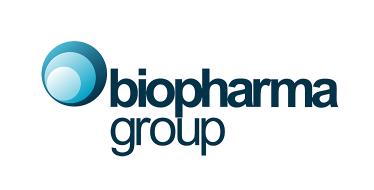 Add My Company
Add My Company
Sign In

Collagen bio-scaffolds are hugely beneficial to many medical fields and therefore it is essential that the process used to develop them is as robust and viable as possible. Here, Magdalena Witek, Research Scientist at Biopharma, provides an insight into the significance of efficient process optimisation and applications.
CollageCollagen-Triple-Helix_White-BG (2)n is the main structural protein in the extracellular space of various connective tissues; it constitutes about 30% of the total human body protein. There are 28 types of collagen identified and described and approximately 80-90% of the collagen in the body consists of types I, II and III. Collagen is found in fibrous tissues such as tendons, ligaments and skin, but also in bones, corneas, blood vessels, cartilage and connective tissue within the body, providing structural support and strength.
Collagen in medical products can be derived from bovine, porcine, human and ovine sources. It is widely used in:
Bone grafts – it doesn’t compromise the structural integrity of the skeleton and due to a triple helical structure, it makes a strong molecule which prevents it from being broken by enzymes. It is very important for proper assembly of extracellular matrices.
Cosmetic surgery – collagen is used to remove wrinkles and lines, skin ageing, dermal fillers, stretch marks and, sometimes scars.
Wound dressing – collagen is one of the components of skin tissue, which can benefit all stages of the wound healing process. It is a natural product, which is resistant to bacteria. Collagen is therefore used for healing different types of wounds and second-degree burns and is required in the replacement and restoring of dead skin cells.
Tissue regeneration/ engineering usually as bio-scaffolds.
Various other purposes, for example, cardiac applications and treatment of osteoarthritis.
Collagen Bio-scaffolds are used to guide and encourage tissue regeneration in the sponge, thin sheets or gel form. Bio-scaffolds can be used:
In vivo – to support the regrowth of soft tissue and bone after injury or surgery.
In vitro – assists in the growth of the new organs from adult stem cells.
Collagen has very good properties for tissue regeneration: pore structure, permeability, hydrophilicity and stability in vivo.
Structure and pore size is very important and can have a significant effect on the growth of the new tissue. When the new tissue grows in the pores, the bio-scaffold degrades (the body breaks down the collagen and assimilates the protein over time), leaving only healthy grown tissue. Achieving the optimum texture and porosity of the sponge/ sheets is essential to support and encourage the body to generate new cells and to ensure the desired structure.
What are the key ways to optimise bio-scaffolds?
The two main processes which affect pore size in bio-scaffolds are:
Freeze drying
Crosslinking
Freeze-drying of collagen is not only used to increase the shelf life of the material and make it lighter/ easier to transport, but also to control pore sizes, which are very important for the growth of new tissue. Controlling the freezing rate of the sample is extremely important in determining the ice crystal growth, and therefore the pore size in the scaffold, to achieve a uniform structure.
In Biopharma’s experience, collagen does seem to be more sensitive to the cooling rate than other pharmaceutical products. Therefore, it is very important to select a suitable cooling rate as well as choose a container that has an appropriate heat transfer coefficient. Slow cooling forms larger ice crystals and leaves larger pores. Quench cooling forms smaller crystals, leaving a smaller pore size, but the larger surface area of the pores overall. Frozen collagen gel has a lower viscosity at higher temperatures, giving more effective ice crystal growth.
The addition of an annealing step (where the temperature of the sample is raised after initial freezing) can also be employed to:
Increase ice crystal size and networking.
‘Even out’ the ice crystal size distribution within the batch of material to reduce heterogeneity.
When carried out above the temperature at which the collagen becomes flexible, annealing can take advantage of the force exerted by the growing ice crystals to control the collagen structure.
Some materials are freeze dried twice:
First, lyo-cycle forms the template structure.
Second lyo-cycle performed after impregnating the template with wound repair agents.
Alternatively, products comprising multiple layers of collage with different properties may be frozen in different stages in order to fuse the layers together prior to drying.
The containers in which collagen is freeze-dried are very important as they can have a significant effect on the heat transfer characteristics and the critical for the properties of the final product.
Crosslinking – A cross-link is a bond that links one polymer chain to another.
Precaution has to be taken when the crosslinking process is applied because this could potentially generate a micro-collapse. This typically occurs in formulations that contain a mixture of crystallising and non-crystallising (amorphous) components, but specifically for collagen-based products, this may occur when they are impregnated with other solutes, then lyophilised.
The most common crosslinking agents are:
Acetic acid – Freeze drying can be a good means of removing any acetic acid remaining due to its volatility (Vapour pressure is 11.6 Torr at 20°C).
EDC (1-Ethyl-3-(3-dimethylaminopropyl)carbodiimide) in the presence of NHS (N-hydroxysuccinimide) – forms “zero length” crosslinks (form protein conjugates without adding additional spacer arm atoms between two conjugated molecules).
Glutaraldehyde (GTA) – takes the form of long polymer chains.
It is important to choose the correct crosslinking agent for your specific purposes and be aware that some amount of the crosslinking agent will likely remain in the final freeze-dried product.
The independent consultancy division of Biopharma has undertaken numerous projects using freeze-drying microscopy to determine the effect of different freezing rates and the addition of an annealing step on the pore sizes of various collagen-based products.
For more information on How freeze drying optimises the processing and viability of collagen bio-scaffolds talk to Biopharma Group
Enquire Now
More News
List your company on FindTheNeedle.

